The Third Taste | Jjigae

DongWon Song is an agent at Howard Morhaim Literary Agency representing science fiction and fantasy for adults, young adult, and middle grade readers as well as select non-fiction. They were formerly an editor at Orbit, a product manager for an ebook startup, and have taught at institutions including Portland State University and New York University. They have a newsletter about the business at publishingishard.com. DongWon is Korean-American, trans, and nonbinary and uses they/them pronouns.
I learned a new Korean word recently: 시원하다. It is transliterated into English as siwon-hada. The version I’m more specifically interested in is: 시원한 맛 (siwonhan-mat). The literal translation is something like to be cool or, in the second configuration, to be cool-tasting. This can be applied literally as in: this watermelon is 시원한 맛 because it is literally cold and refreshing and it’s a hot summer day and it is providing a sense of relief and refuge. But 시원하다 has a broader meaning too.
It describes the taste of coolness that comes from not only having eaten something delicious, but being full and satiated, and also having eaten something well balanced and something that is digesting well. It is the taste of not only good food but of feeling good in your body after. Watermelon on a hot day is 시원하다, but so is a hot bubbling kimchi stew full of sweet slices of Korean radish, tender slivers of squash, perfectly chewy rice cakes, and unctuous soft tofu. Eating it makes you feel alive and whole and better, and after, you are full but not uncomfortably so, and your body is humming at a peak capacity to turn calories into energy and fuel. Doing the work of becoming more of yourself.
시원하다. To taste cool. To taste refreshing. To taste… right.
It’s the taste of balance. Of the perfect point of tension between vegetable, grain, and protein, between sweet and sour, acid and umami. The taste of salt and brine. Of something elemental and deep but as refreshing as the breeze over ocean flats, redolent with the messy business of life.
꘏
I write with authority of what 시원하다 means. Of how it applies to my life. Of how I cook and eat. But now I must confess: I learned this word yesterday. I learned it from a restaurant review in the New York Times written by Pete Wells—a white man.
I didn’t grow up with this word. Maybe my parents said it from time to time or I heard an aunt or uncle mention it after a particularly good meal. But I wouldn’t know. I don’t speak Korean. I never learned the language. I’ve tried a few times. There was the couple of months when I was nine or ten that we’d drive an hour to a Korean church where I sat in a hot basement while some nice people tried to tell me about Jesus in a language I didn’t understand. There was the summer I spent in Seoul after high school where I mostly roamed the city falling in love with the food—bubbling hot 찌개 and roasted fish for breakfast and enormous piles of 팥빙수—frozen ice covered in sweetened red bean, condensed milk, canned fruit, and perfectly chewy balls of mochi. And there were the few months in pandemic lockdown I spent with a lovely retired linguistics professor on Zoom who tried to give me five hours of homework a week.
None of that worked. I understand some words here and there and can ask where the bathroom is or order lunch, maybe. But even with what few words I do know, I feel so embarrassed about my lack of knowledge, about my American accent, that I mostly just mumble incoherently and gesture until they get what I’m failing to say.
I didn’t grow up immersed in Korean-ness. Sure, I grew up with Koreans, my parents. But I was born and raised in South Florida. There really aren’t a lot of us down there. There was one other Asian kid in my grade school class and his family was from Delhi. The closest Korean food available to us was over an hour away and it was actually a Chinese restaurant that just happened, if you knew to ask, to serve the Korean style versions of traditionally Chinese dishes 짜장면 and 탕수육 – noodles in black bean sauce and sweet and sour pork. These were distinctly Korean in their preparation but ultimately a fusion with the Chinese cuisine that inspired them. More traditional fare like 찌개 and 설렁탕 or Korean barbecue like 갈비 were all treats for us, my parents even more so than my brother and I, only found on rare trips to New York’s 32nd Street Koreatown.
The Korean words I know are mostly the words for food. My vocabulary is driven by my hunger. My grammar is one of need, of politely asking for things, from family members, from servers at restaurants. I know the words for restaurant, for food, for water. I know the names of my favorite dishes: kimchi, seolleongtang, doenjang, jjigae, mandoo, patjuk, dwejigogi, bo ssam, kkaennip, dduk, biji, pajeon. I don’t know how to spell them in Hangul, only how to plug the transliteration into Google Translate. I know how to say “yes, this is delicious” or “yes, I am hungry.” I know how to say “thank you.”
The rest of the words I know in Korean are the ones that were important to our family. Stuff like 빠르! (hurry up!) or 아이고 (an all purpose sigh of frustration and irritation, infinite in its expressiveness, endless in its applications). 시원하다 was not one of them. I don’t come from a 시원하다 people. My parents are the type who are always hungry for the next bite. Eating from life as quickly and voraciously as they could. They spent their youth desperate to escape a childhood marked by war and deprivation, to make a name for themselves in a country of opportunity and wealth. And they did—they succeeded beyond their wildest imaginations, building successful businesses, raising two children, reaching a retirement of comfort and security.
I was raised to want. To strive. No one in my family has an ounce of chill in their veins. Hot-blooded and hungry. That’s my people.
I wasn’t born to 시원하다.
꘏
When I learned this word (again, yesterday. As I write this it has been less than 24 hours), I was struck by an immediate bone-deep recognition. I knew this taste; I knew this feeling. To taste of coolness, to feel it in your gut and your bones and your blood. This was what I had been chasing.
You see, I’ve started cooking a lot of Korean food in the last year. I’ve always loved cooking for friends, for loved ones. But my menus have always been for holidays, for celebrations, for guests. Mostly, over the years, I’ve made classic French dishes or Southern soul food, rich, meaty things. A three day cassoulet recipe was one of my first showstopper meals. Lamb roasts, pork stews, sous-vide steaks bloody rare and seared to perfection. Pickled shrimps and radicchio salads. Birria tacos and creamed hominy. Fried chicken and fresh biscuits.
But I have always hated cooking for myself. If it’s ever just for me, the effort of getting groceries, of planning a meal, of prepping ingredients, of searing, sautéing, simmering felt endless and pointless. Why do that when delivery is twenty minutes away? Why figure out what to cook when every cuisine I might want is on an app on my phone?
This is not a 시원하다 way to be. There’s no balance to delivery food. It’s hard on the body and on the wallet. Sometimes I have good reasons to rely on delivery—I’ve simply been too busy or too depressed. But a welcome break from the crushing monotony of daily chores can quickly become something that pulls me out of a stable place. My body tells me in a dozen ways that it does not appreciate this way of living. My energy dips, my mood is unstable, I feel like I’m moving through molasses.
But in the past year, partly out of curiosity and as a way to connect with the culture I come from, and partly as a way to bond with the people around me—I’ve been learning to make more Korean food. I’ve been cooking it at home on a regular basis. Coming out to my family as queer was hard and has not gone the way I’d hoped. So, I ask my mom for recipes and send her photos of the food I make. That’s safe. That’s a way to stay connected.
So now I make a batch of kimchi every month. I salt huge heads of napa cabbage, mix Korean red pepper flakes with Asian pear and fish sauce and ginger and garlic. Boil rice flour and sugar to jumpstart the fermentation. Julienne carrots and radish and scallions. I bought those plastic kimchi containers with the vacuum gaskets on them to keep the ferment going without exposing the surface to oxygen and letting mold in. Every week I make 반찬, banchan—the ubiquitous and infinitely varied small plates of food served as part of every Korean meal (not side-plates, never side-plates, they are too important for that): kimchi-ed cucumbers, spinach with lots of garlic and soy sauce, Korean squash lightly breaded in flour and egg, stirfried tiny anchovies, soy-braised eggs with perfectly jammy yolks. Whatever I feel like this week, whatever looks good and makes my body feel good when I eat it.
And this helps me feed myself, to care for this soft animal of my body. Because I realized one day that if I had kimchi and I had rice then I was 80% of the way to a meal. I could fry an egg, or make a sauce to put over a block of cold silken tofu, or grab some dumplings from the freezer. I could open a can of Spam or some tinned fish and eat that with 반찬 and the rice that my fancy rice cooker keeps warm for days. And I felt better. I felt connected to the people I cared about, to my body, and to myself.
I started dating someone new and for the first time they’re someone like me, at least in this one way. We may have wildly different backgrounds in most ways, but we’re both from Korean immigrant families and so there’s a lot we share too. We quickly fell into a rhythm of every Friday night they come over and we eat a bowl of steaming hot stew with the long metal spoons Koreans use out of the same stone pot, straight from the stove. It is the way our grandmothers ate, and theirs before them. It makes us feel old and happy and warm and full in each other’s company. It makes us feel 시원하다.
There are weeks where the idea of making the 반찬 is overwhelming. Where my kitchen needs to be cleaned and I can’t find the energy to do it. Where the rice is gummy and the kimchi tastes dead. Where things feel out of balance and I’m not sleeping right and the world feels against me.
But more and more, these days, I know the taste of coolness. I am building a life that tastes rich, and full, and that digests well. I am filling my days and nights with things and people that nourish me and that sustain me over things that I might crave but don’t need. I am learning a practice. I am making a life that is, at least a little bit, 시원하다.
It starts and ends in a hot, rich, bowl of 김치찌개. I hope it brings you the taste of 시원하다.
DongWon’s Jjigae
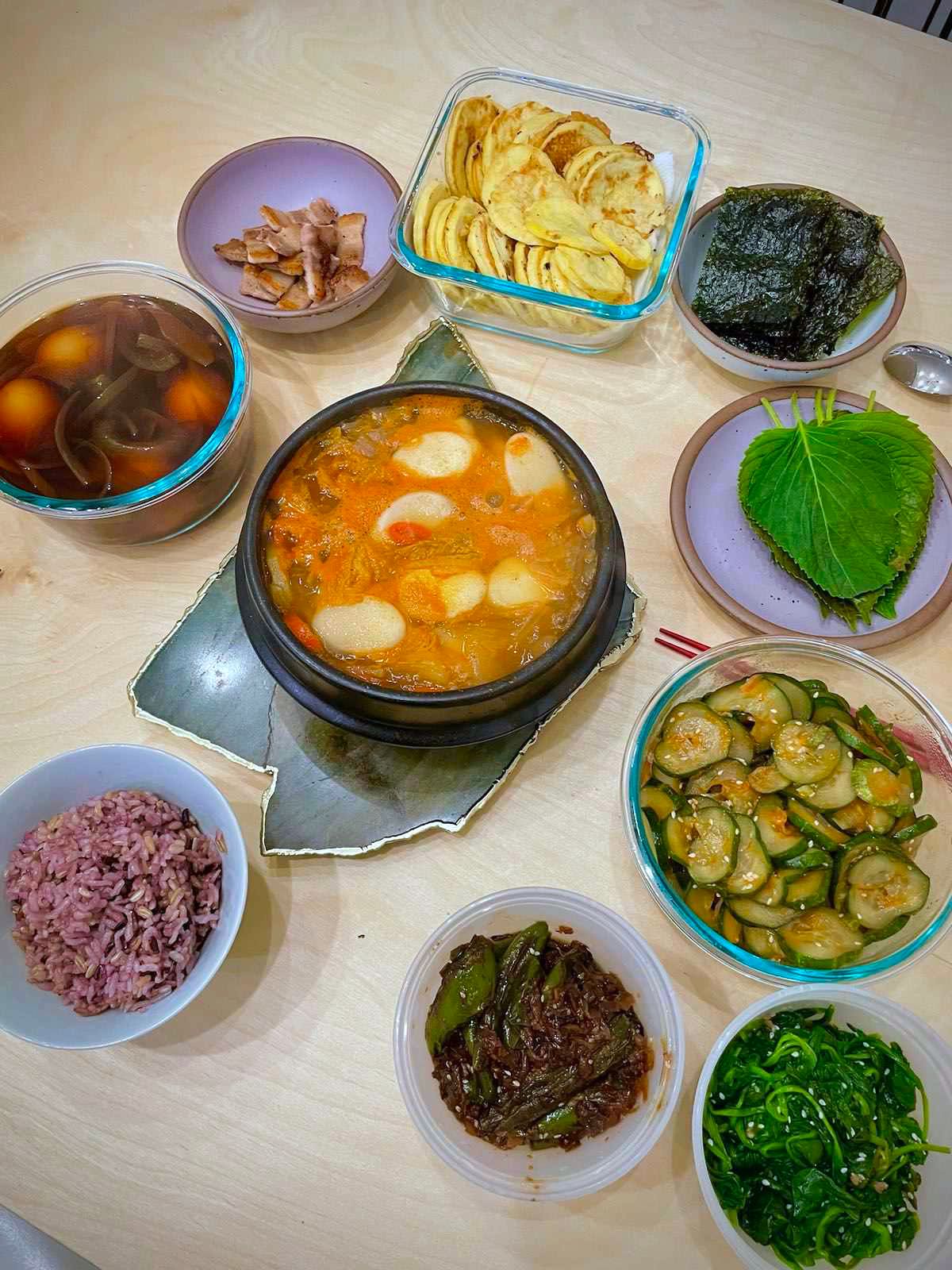
This is a base recipe for jjigae, a delicious piping-hot Korean stew. Prepared as written, it produces 2-3 generous servings.
Get the Recipe: PDF, Google Doc
If you’d like to own the Personal Canons Cookbook ebook, which collects all these essays and recipes in easy-to-reference, clickable format—plus loads of bonus recipes from me!—join the Stone Soup Supper Club. The ebook is free for subscribers, who will get the download link in their inboxes in the first Supper Club email of 2024!
Remember: Care for yourself and the people around you. Believe that the world can be better than it is now. Never give up.
—Gailey


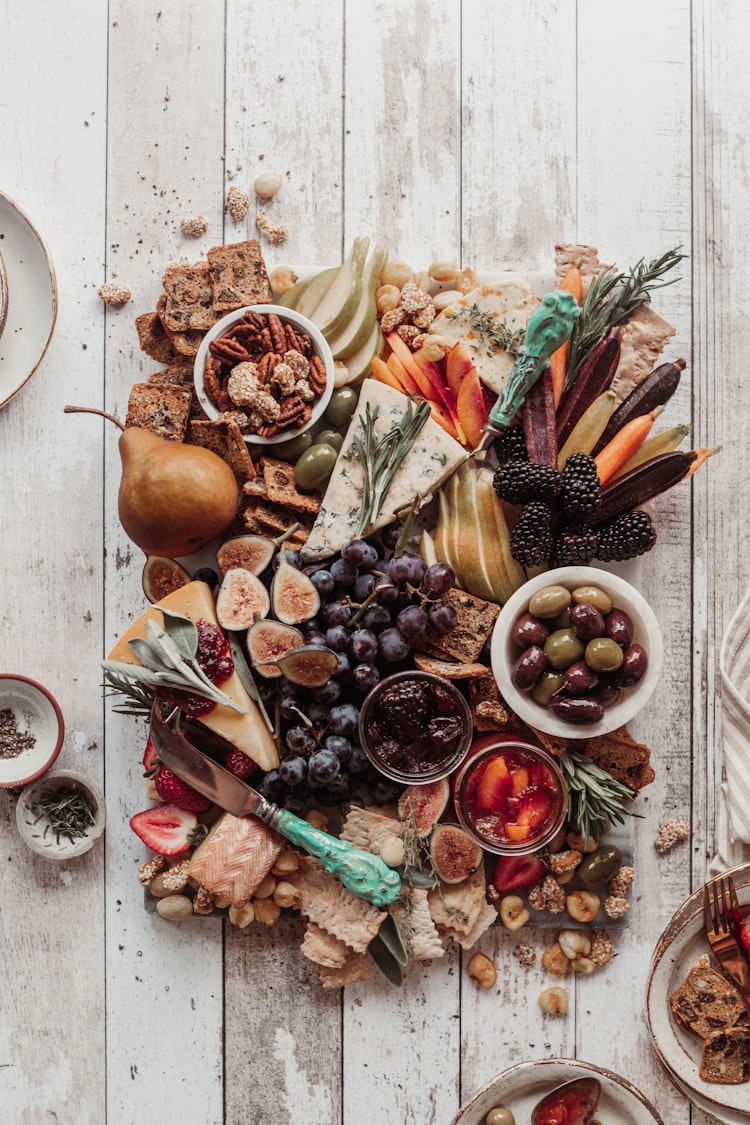
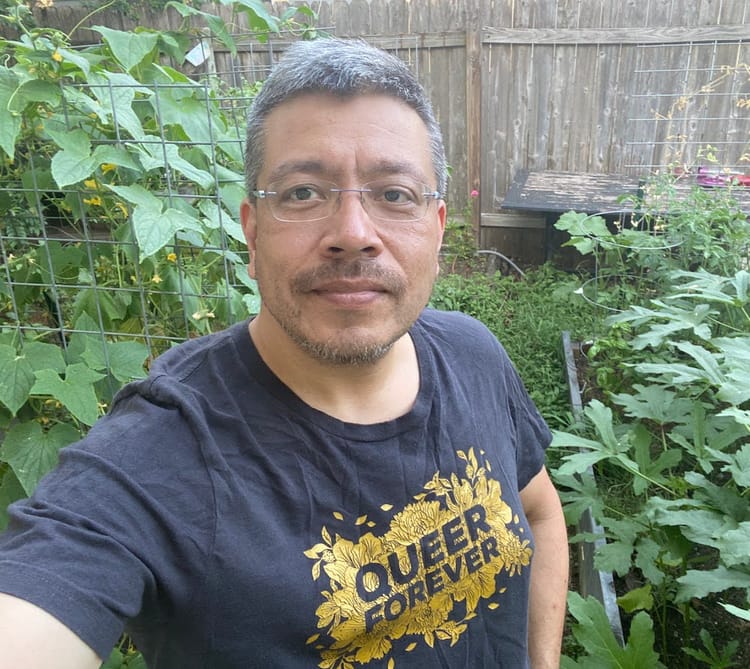
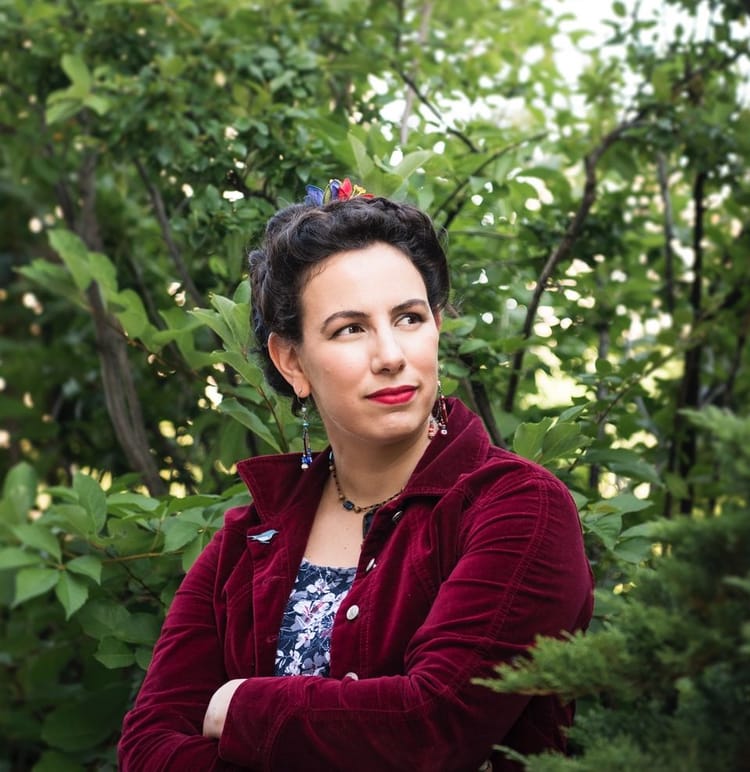
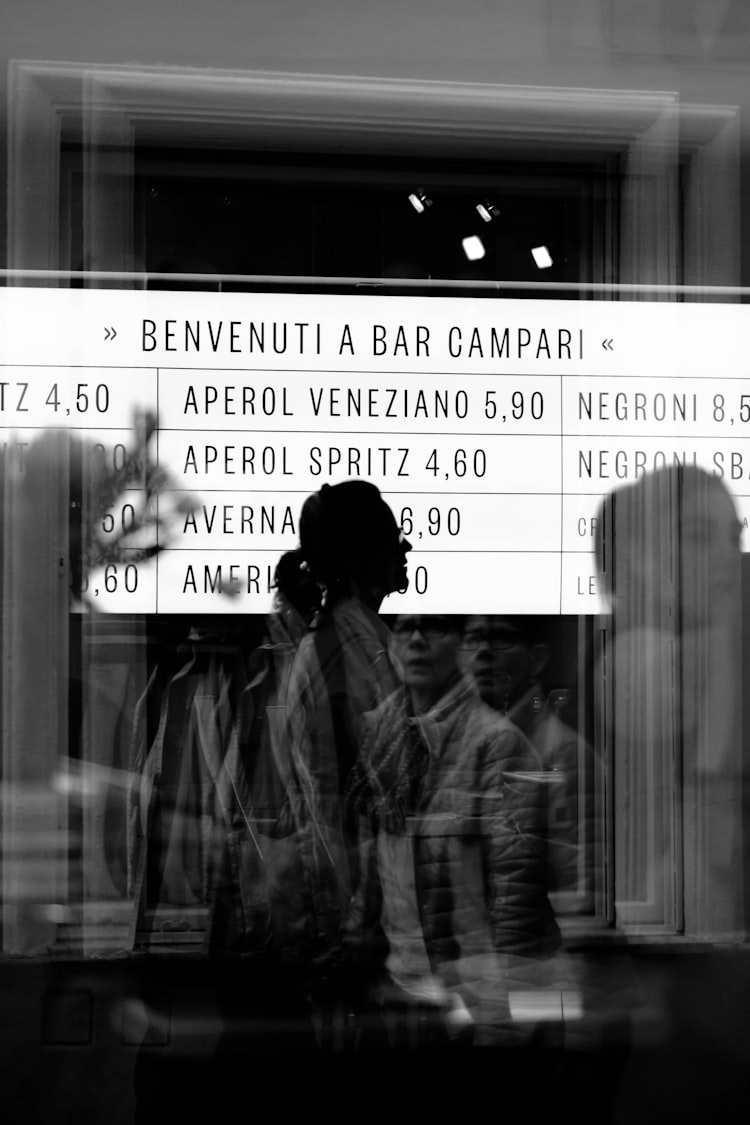
Member discussion